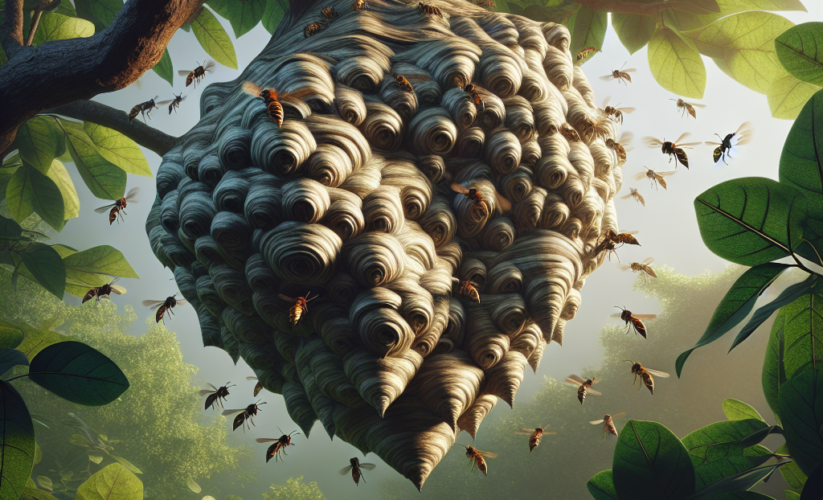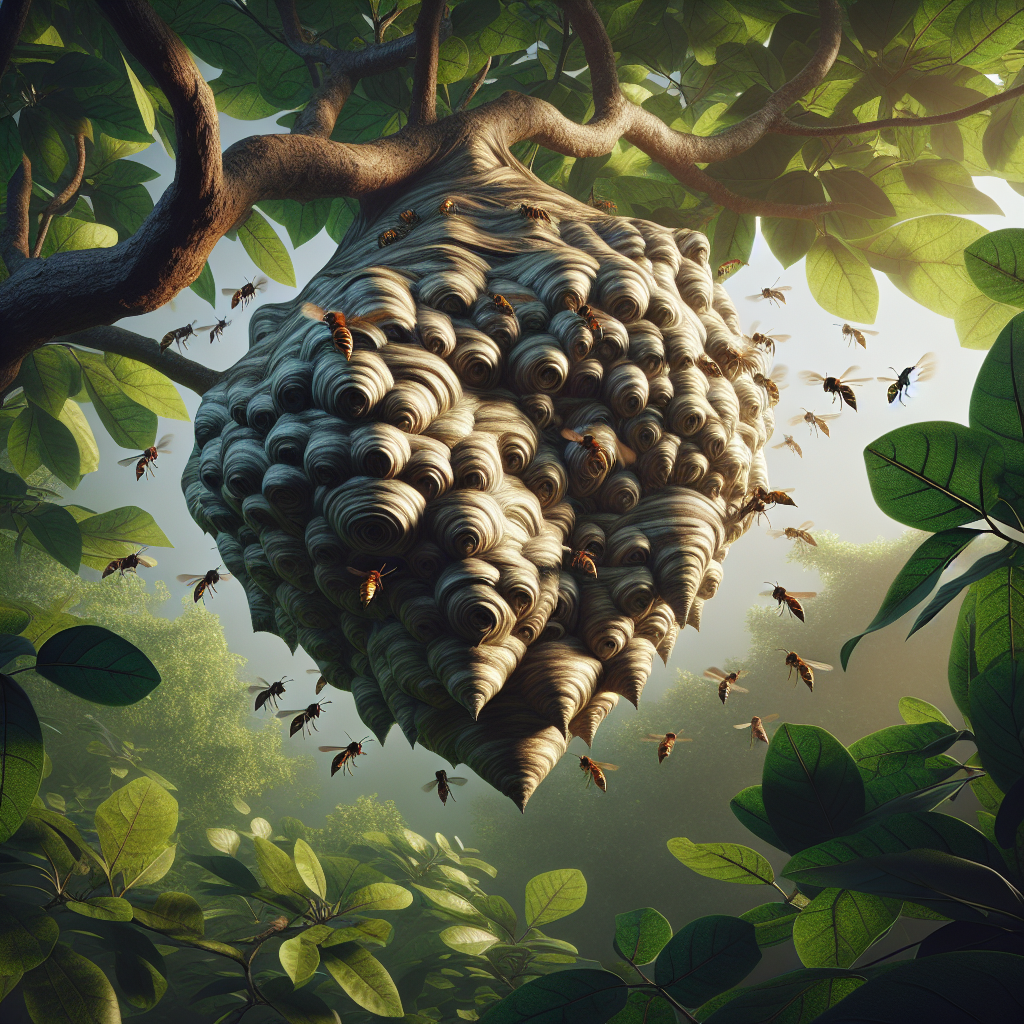
Discover the 10 Secrets of Hornissennest for Ultimate Protection
Understanding Hornissennest: A Comprehensive Guide
The Nature of Hornissennest
Hornissennest, commonly referred to as a hornet nest, is an intriguing aspect of nature, primarily constructed by the European hornet. The nests are often mistaken for bee hives but are distinctly different in structure and function. Typically, these **hornet nests** are made from a papery material created from chewed wood fibers mixed with saliva, resulting in a unique and robust shelter for the hornets. **Understanding hornissennest behavior**, including how and where they construct their nests, is crucial for anyone living in proximity to these fascinating insects.

What Are Hornets and Their Nests?
Hornets belong to the wasp family and are known for their larger size compared to typical wasps. A **hornet nest** can grow significantly, sometimes holding thousands of hornets. The nests can be found in various locations including trees, shrubs, or even man-made structures. One of the most notable features of hornissennest is its layered construction, which provides both insulation and structural stability. If you encounter a **hornet nest** in your vicinity, it’s essential to recognize the potential risks associated with hornet stings, which can be painful and, for some individuals, lead to allergic reactions.
Characteristics of a Hornissennest
Typically, hornets construct their nests in shaded areas to protect them from direct sunlight. The size of a hornissennest can vary greatly depending on the species and available resources, with some nests reaching over a foot in diameter. They are often recognizable by their grayish-brown color, which comes from the wood fibers they utilize. Understanding these characteristics can greatly aid in identifying whether you’re dealing with a **hornet nest** or another type of insect nest.
The Lifecycle of Hornets
The lifecycle of a hornet begins in late winter when a fertilized queen emerges from hibernation to start a new colony. She meticulously crafts the initial structure of the **hornisennest**, laying eggs that will eventually become worker hornets. These workers take over the construction and maintenance of the nest as well as foraging for food once they mature. This process highlights the social structure within each hornet colony and underscores the importance of a **hornet nest** in their survival.
Impact of Hornissennest on Human Activity
While hornets play an essential role in the ecosystem, their presence can sometimes lead to conflicts with humans. Many people view **hornet nests** as pests, particularly when they nest near human habitation. Recognizing the significance of these nests and the benefits they provide, such as natural pest control, is crucial. However, if safety becomes a concern, it’s important to take appropriate measures to manage hornets without unnecessarily harming them.
When to Be Concerned About Hornissennest
If a **hornet nest** is located near frequently used areas of your property, it’s vital to assess the situation. Hornets are generally not aggressive and will only sting when they feel threatened. However, as the summer progresses, they may become more defensive of their nests, especially if someone approaches too closely. Understanding hornet behavior can help in managing any potential risks and taking preventive actions. For instance, if you notice an increasing presence of hornets around your home, it may be a sign that they are defending their territory.
Safe Removal Methods
If you find that the hornissennest poses a direct risk, consider these **safe removal methods**: hiring a pest control professional is often the best course of action due to the risks involved. If you opt for a DIY approach, ensure you plan for nighttime when hornets are less active. Wear protective clothing and utilize a long-reaching insecticide approved for hornets. Remember to consider local regulations regarding the removal of **hornet nests**, as some species may be protected. Proper preparation can make this process safer and more effective.
Education and Awareness
One key takeaway concerning **hornet nests** is the importance of education and awareness. Understanding the role hornets play in the environment can help foster a more tolerant attitude toward them. Additionally, schools and local governments can promote educational programs focused on the ecological benefits of hornets, which may reduce instances of unnecessary removals and foster coexistence with these essential insects.
Common Myths About Hornisstennest
Many myths surrounding hornissennests can lead to unnecessary fear and misunderstandings. For instance, some believe that all hornets are aggressive and will attack unprovoked. In reality, while they can be defensive, hornets prefer to avoid confrontation. By debunking these myths, we can create a more informed public that understands the nature of these insects.
Myth: Hornets Are Just Like Bees
One prevalent myth is that hornets are simply larger versions of bees. Although they share similarities, such as pollination, the **hornet nest** is quite different from a beehive in structure and social order. Hornets are actually more closely related to wasps. This misconception can lead to misguided attempts to protect and preserve **hornet nests**, neglecting the distinct characteristics and behaviors unique to hornets.
Myth: Hornets Are Always Aggressive
Another common belief is that hornets are inherently aggressive creatures. While they will defend their nest fiercely, hornets generally do not seek out confrontation and often prefer to avoid humans. Educational initiatives can help dispel this misconception, leading to safer interactions between humans and hornets.
Understanding the Benefits of Hornets
Despite their reputation, hornets play a crucial role in their ecosystems as pest control agents. They help regulate populations of other insects, including agricultural pests. By highlighting these benefits, we can foster a greater appreciation for **hornissennest** and the creatures that create them, promoting coexistence rather than removal.
Key Takeaways
- Hornissennest serves as a vital home for hornets, constructed from chewed wood fibers.
- Understanding hornet behavior can reduce conflicts and improve safety.
- Educating the public about the benefits of hornets may encourage coexistence.
- Effective management of hornet nests involves safe removal practices.
- Debunking myths surrounding hornets can lead to a more informed community.
FAQ
1. How can I identify a hornet nest in my yard?
A hornet nest is typically round and made from papery material, often found in trees or sheltered areas. They can be quite large, sometimes larger than a basketball, and usually have a characteristic layered appearance.
2. What should I do if I accidentally disturb a hornet nest?
If you disturb a hornet nest, remain calm and move away slowly. Do not swat at the hornets, as this may incite them to defend their nest. Seek shelter indoors until they disperse.
3. Are hornets beneficial to gardens?
Yes, hornets can be beneficial as they prey on pests that can harm your plants. They help maintain the ecological balance by controlling pest populations, making them valuable to gardeners.
4. Can I safely remove a hornet nest myself?
DIY removal of **hornistennest** can be dangerous. It is generally recommended to consult a pest control professional. If you do attempt removal, do so at night using protective clothing and dedicated insecticides.
5. What do hornets eat?
Hornets primarily feed on sugary substances and insects. They are known to capture other insects to feed their larvae, thereby playing a crucial role in the ecosystem’s food chain.